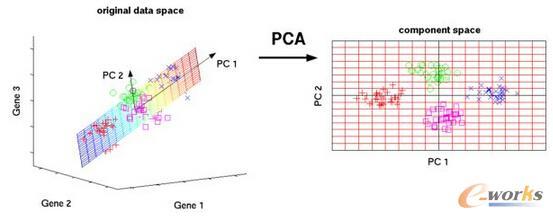DNA-based biodiversity surveys involve collecting physical samples from survey sites and assaying the contents in the laboratory to detect species via their diagnostic DNA sequences. DNA-based surveys are increasingly being adopted for biodiversity monitoring. The most commonly employed method is metabarcoding, which combines PCR with high-throughput DNA sequencing to amplify and then read `DNA barcode' sequences. This process generates count data indicating the number of times each DNA barcode was read. However, DNA-based data are noisy and error-prone, with several sources of variation. In this paper, we present a unifying modelling framework for DNA-based data allowing for all key sources of variation and error in the data-generating process. The model can estimate within-species biomass changes across sites and link those changes to environmental covariates, while accounting for species and sites correlation. Inference is performed using MCMC, where we employ Gibbs or Metropolis-Hastings updates with Laplace approximations. We also implement a re-parameterisation scheme, appropriate for crossed-effects models, leading to improved mixing, and an adaptive approach for updating latent variables, reducing computation time. We discuss study design and present theoretical and simulation results to guide decisions on replication at different stages and on the use of quality control methods. We demonstrate the new framework on a dataset of Malaise-trap samples. We quantify the effects of elevation and distance-to-road on each species, infer species correlations, and produce maps identifying areas of high biodiversity, which can be used to rank areas by conservation value. We estimate the level of noise between sites and within sample replicates, and the probabilities of error at the PCR stage, which are close to zero for most species considered, validating the employed laboratory processing.
翻译:基于DNA的生物多样性调查涉及从调查地点收集物理样本,并分析实验室内的内容,以便通过诊断DNA序列检测物种。基于DNA的调查越来越多地用于生物多样性监测。最常用的方法是元解码,将PCR与高通量DNA测序相结合,以扩大并阅读“DNA条形码”序列。这一过程生成计数数据,表明阅读每个DNA条形码的次数。但是,基于DNA的数据是吵闹的和容易出错的,并有若干变异来源。在本文中,我们提出了一个基于DNA的数据的统一建模框架,允许所有关键的变异和错误来源在数据生成过程中进行DNA调查。模型可以估计不同地点的生物量变化,将这些变化与环境变异联系起来,同时核算物种和地点的关联性。推论是使用Globs或Metopolis-Hastings Restorguard进行计算,我们还考虑采用一个重新校正方案,适用于跨结果模型,从而改进对数据生成过程的混合,并采用一种适应性方法来更新各个地点的生物量变异性变异性变量,同时计算数据。我们用在目前进行模拟阶段进行数据分析,然后进行数据分析,然后通过模拟分析,然后分析,然后分析结果,然后分析,然后分析,然后分析,然后分析,然后分析,然后确定每个阶段,然后分析,然后分析结果,然后分析,然后分析,然后分析结果,然后分析,然后确定每个阶段,然后分析结果,然后分析。我们算测测算结果,然后分析。我们算结果,然后分析。




